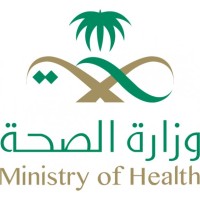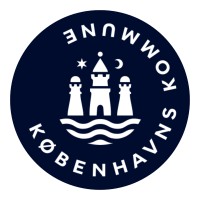Company Cyber Security Posture
NANA
NA Company Details
NA
NA
NA
NA
NA
NA
Scan still pending
NA
NA
Between 200 and 800
This score is AI-generated and less favored by cyber insurers, who prefer the TPRM score.
 NA Global Score
NA Global Score.png)

Company Scoring based on AI Models
| Model Name | Date | Description | Current Score Difference | Score |
|---|---|---|---|---|
| AVERAGE-Industry | 03-12-2025 | This score represents the average cybersecurity rating of companies already scanned within the same industry. It provides a benchmark to compare an individual company's security posture against its industry peers. | N/A | Between 200 and 800 |
Company Cyber Security News & History
| Entity | Type | Severity | Impact | Seen | Url ID | Details | View |
|---|
Company Subsidiaries

NA
Access Data Using Our API

Get company history
.png)
NA Cyber Security News
Swiss government data published following supply chain attack – here’s what we know about the culprits
The Swiss government has warned that sensitive data has been stolen and leaked following a cyber attack on a supplier.
Swiss Government Confirms Radix Ransomware Attack Leaked Federal Data
The Swiss government has confirmed that sensitive federal data has been leaked onto the dark web following a ransomware attack on Radix.
Switzerland Mandates Cyber-Attack Reporting for Critical Infrastructure
The reporting mandate will apply if the cyber-attack threatens the functioning of critical infrastructure, has resulted in the manipulation or ...
Swiss government confirms cyber attack on health foundation
Switzerland said that a cyberattack on the non-profit health foundation Radix that involved data being stolen and encrypted had also ...
New memo reveals Biden’s cybersecurity priorities through fiscal year 2026
The Office of the National Cyber Director has released updated priorities and procedures regarding President Biden's proposed cybersecurity pillars.
Swiss federal administration hit by hacker attack
Hackers have attacked the Swiss federal administration. Among other things, telephones, email and various federal websites and specialist ...
Overcoming ‘Swiss Cheese Security’ With Modern Privileged Access Management
Overcoming 'Swiss Cheese Security' With Modern Privileged Access Management · Legacy privileged access management (PAM) solutions, rooted in a ...
US authorities issue ransomware warning, and other cybersecurity news to know this month
RansomHub, which was previously known as Cyclops and Knight, has established itself as an efficient and successful service model the advisory warns.
Following the federal cybersecurity money trail
COMMENTARY: Cybersecurity is crucial to everything from massive critical infrastructure projects to the safe operation of small businesses ...

NA Similar Companies

Ministry of Health Saudi Arabia
The Ministry of Health (MOH), by way of its objectives, policies and projects included in this strategy, seeks to accomplish a promising future vision; namely, delivering best-quality integrated and comprehensive healthcare services. Carrying health conditions or health status of Saudi inhabitants t

HM Prison and Probation Service
HM Prison and Probation Service (HMPPS) is an executive agency of the Ministry of Justice. It exists to ensure people serve their sentences given by courts, both in prisons and on probation in the community. Working for HMPPS is not your average job. Whether it’s: • diffusing confrontation • helpi

Queimados - RJ
NÚMEROS O município de Queimados ocupa uma área de 76,921 quilômetros quadrados e se localiza a 22º42'58" de latitude sul e 43º33'19" de longitude oeste, a uma altitude de 29 metros. A população aferida na contagem do Instituto Brasileiro de Geografia e Estatística (IBGE), em 2008, foi de 137.870

Polícia Civil de Minas Gerais (PCMG)
Apuração de crimes e contravenções, por meio da investigação criminal cientificamente aplicada, e o exercício da polícia judiciária para o esclarecimento de autoria, materialidade, motivo e circunstância, bem como a identificação civil e criminal, o registro e licenciamento de veículos,

Air Force Civilian Service
We are on a mission. A mission to defend freedom and preserve liberty. A mission to support the men and women in uniform of the United States Air Force with our talent and dedication and service. Fueled by the challenge and motivated by the opportunities, we’re on a mission to excel in every way. An

Københavns Kommune
Københavns Kommune er Danmarks største arbejdsplads med ca. 45.000 medarbejdere. Vi udvikler hovedstaden og servicerer over 500.000 københavnere. Vores mål er at fastholde og udvikle København som en af verdens bedste byer at bo i – og skabe øget vækst gennem viden, innovation og beskæftigelse. Fi

Frequently Asked Questions
Explore insights on cybersecurity incidents, risk posture, and Rankiteo's assessments.
NA CyberSecurity History Information
How many cyber incidents has NA faced?
Total Incidents: According to Rankiteo, NA has faced 0 incidents in the past.
What types of cybersecurity incidents have occurred at NA?
Incident Types: The types of cybersecurity incidents that have occurred include .
Additional Questions
What Do We Measure?
















Every week, Rankiteo analyzes billions of signals to give organizations a sharper, faster view of emerging risks. With deeper, more actionable intelligence at their fingertips, security teams can outpace threat actors, respond instantly to Zero-Day attacks, and dramatically shrink their risk exposure window.
These are some of the factors we use to calculate the overall score:
Identify exposed access points, detect misconfigured SSL certificates, and uncover vulnerabilities across the network infrastructure.
Gain visibility into the software components used within an organization to detect vulnerabilities, manage risk, and ensure supply chain security.
Monitor and manage all IT assets and their configurations to ensure accurate, real-time visibility across the company's technology environment.
Leverage real-time insights on active threats, malware campaigns, and emerging vulnerabilities to proactively defend against evolving cyberattacks.




